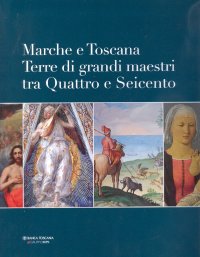Econimic centralisation in formative states. The archaeological reconstruction of the economic system in 4th millennium Arslantepe
Edited by M. Frangipane.
Roma, 2010; bound, pp. 330, b/w ill., cm 21x30.
(Storia di Preistoria Orientale).
series: Storia di Preistoria Orientale
ISBN: 88-904240-1-X
- EAN13: 9788890424014
Subject: Essays on Ancient Times,Excavations
Languages: 
Weight: 1.66 kg
There were two main reasons underlying the original idea of attempting a comprehensive study of the different classes of data gathered at Arslantepe on the final phases of Late Chalcolithic in the perspective of a palaeo-economic investigation. Firstly, the vast amount of data available, with excellent contextualisation, would have made it possible to conduct a cross-cutting and interdisciplinary analysis aimed at a global anthropological reconstruction. Secondly, a need has long been felt to set the rich theoretical debate on the issue of archaic economies in a concrete and specific framework of a pure archaeological analysis, by surveying all the material signs relating to the economy left behind by the societies under study. And the case we have selected for our analysis is specifically that of a society which played a prominent role in a primary and intensive process of growing centralisation. In the final period of the fourth millennium BC (period VI A) Arslantepe in fact appeared to be an ideal case for a study of the characteristics and nature of the early forms of central control over the economy, exemplifying that crucial type of society halfway between the chiefdom and the State, still largely to be defined in conceptual terms: it had nascent early-state institutions, and a complex, hierarchical and vertical organisation, but one which was not urban, or in any mature sense of the term, a proper State. The bureaucratic and administrative apparatus appeared to have been already highly developed and sophisticated; the creation of a central public area had been enormously developed in terms of extension, its monumental character and the internal organisation of the spaces and the public activities performed there, such that it could be rightly defined as a palace or proto-palace; the centralised management of resources and labour in these areas has emerged very clearly and prominently, while ritual practices, which in the more archaic societies formed a major part of all communal activities, including economic ones, seem to have been limited to certain clearly-defined environments in comparison with the previous period (period VII, mid-fourth millennium). But the degree of urbanisation was still very small, and the political control of the territory was probably limited. Conversely, there seems to have been tight control over the economy, and the nature and degree of this economic control is the topic that this book sets out to investigate, by attributing the various classes of data to sectors of the economy and, through them, attempting to define the characteristics of production, consumption and elite interference in each of these sectors. The historical context to which the period of the Arslantepe Palace belongs is also one in which there was a pronounced tendency on the part of the highly centralised and hierarchical southern Mesopotamian societies to "expand" towards the distant northern regions, which some scholars relate directly to the need to meet requirements of an essentially economic character. I am referring to the interpretation of the phenomenon of what is called Uruk "colonisation" as part of the growth of a global economic system, with specialised and technologically "developed" regions lacking in raw materials (Lower Mesopotamia) and "peripheral" regions presumed to have had a less complex and evolved economic and social structure, but well-endowed with natural resources (the northern areas of Upper Mesopotamia and the mountainous regions of Anatolia and Iran). This approach to the phenomenon is in my opinion based on a concept of the economy as a means of optimizing the supply and accumulation of goods, no matter if primary or sumptuary, in increasing quantities and quality at all times, and in all places and types of society. In this perspective the political economy of the emerging élites in Early State societies is viewed as purely the quest for goods to be accumulated, hoarded and exchanged in order to boost their wealth and power; and trade is one crucial means of obtaining these goods, especially where there is a lack of raw materials, being the actual social and/or economic needs for such materials often left out of consideration. This approach entails what is fundamentally an adaptationalist and efficientist view, positing an automatic relationship between the existence of emerging élites and their managerial abilities to direct economic agencies, even over large distances, according to criteria and categories that are typical of market economy societies, or at least mature State societies. I shall be addressing in this volume the problem of what is in my opinion the specific nature of pre-State or archaic State economic systems. What is evident, however, is that the debate that has taken place around the dynamics, reasons and nature of the wide-ranging interregional relations established in fourth millennium societies in Mesopotamia, which is still heated and unsolved[1], cannot properly move forward without a fundamental understanding of the functioning of local economies, local production relations, and the economic policies pursued by the central institutions in each of the areas concerned. Arslantepe is also very closely bound up with the question of long-distance relations and trade, since it certainly joined this network of relations precisely in the period that we shall be addressing here, albeit with its own highly autonomous and peculiar character. An internal analysis of its development and its "economic policies" is therefore also crucial in order to resume the debate on the nature and objectives of the interregional relations in the Uruk period. On the other hand, since Arslantepe was quite evidently a society with a very similar political and economic structure to its contemporary Mesopotamian societies, the case study presented here may also shed light on the more general issue of the features of the political economy in archaic and formative centralised societies in the Mesopotamian world, and the part played in these societies by the staple economy and the prestige goods (wealth) economy in supporting the early forms of the nascent State[2]. With this in mind, we shall seek to analyse all the archaeological elements that have been discovered and elaborated so far from Arslantepe period VI A (Late Chalcolithic 5, 3350-3000 BC) which can be referred to different sectors of the economy: from production sectors, involving the commitment of human energies and the labour force - primary economic activities, the production of artisanal and "luxury" goods, building activities in the public central areas - to the distribution, circulation and consumption of goods, evidenced by the places and forms of redistribution, storage procedures, and the characteristics and location of containers for storage, processing and consumption of foodstuffs. For each of these activities we shall attempt to identify, wherever possible, the areas in which they were performed and were most concentrated: public or private, ceremonial or secular, official or routine. Since we are faced with a process of exponential growth of the power of the élites and their institutional organisation, which culminated in the "collapse" of the system at the end of the fourth millennium followed by a radical structural change in the Arslantepe society, we felt that it was crucial, wherever possible, to introduce elements of comparison with the previous, formative period (period VII, LC 3-4, 3800-3400 BC), in which many of the elements had already emerged that were subsequently to develop fully in the "palace" period, and with the subsequent period following the crisis in the centralised system, in which we have evidence of a rural society from which economic centralisation was completely absent (period VIB2, Early Bronze I, 2900-2800 BC). The areas excavated for each of these periods are of comparable size (between 2000 and 2500 sqm) and mostly coinciding with each other. Many of the results presented here are not definitive and, depending upon the sectors and the aspects analysed, they are still in a variable state of progress[3]; we nevertheless felt that the data on which we could work were sufficiently comprehensive and plentiful, and often already fairly thoroughly studied to enable us to thematically cross-reference the information successfully and to come up with interesting and sufficiently reliable results for a new and careful reflection on the characteristics and defining features of the political economy of this very ancient centralised society.












